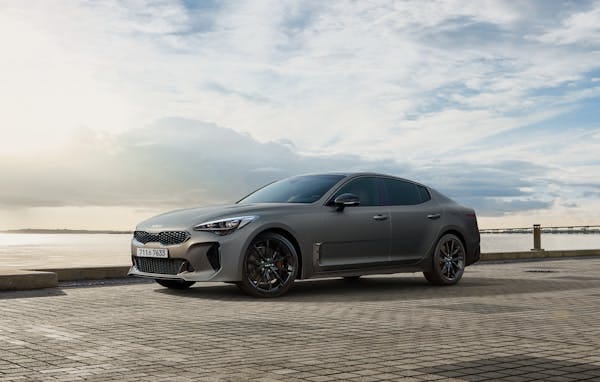When you’re in the market for a new car, one term that comes up often is car specifications. For many buyers, these specs can be overwhelming and confusing. But understanding them is crucial to making an informed decision that suits your lifestyle, driving habits, and budget.
This article will walk you through the most important car specifications, what they mean, and how they affect performance, comfort, safety, and efficiency.
What Are Car Specifications?
Car specifications (often referred to as “car specs”) are a detailed summary of a vehicle’s technical features and capabilities. These include performance metrics, engine details, dimensions, safety features, fuel economy, and more.
Manufacturers provide this information so you can compare models and decide which car meets your expectations.
Key Car Specifications to Know
Let’s break down the most commonly listed specifications and what they mean:
1. Engine Type and Displacement
Example: 1.5L I4 Petrol
This refers to the size of the engine (in liters) and the number of cylinders (I4 = inline 4-cylinder).
Larger engines often offer more power but consume more fuel.
2. Horsepower (hp)
Indicates the engine’s power output.
Higher horsepower means better acceleration and higher top speeds.
Ideal for those who drive on highways or in hilly areas.
3. Torque (Nm)
Measures the rotational force of the engine.
Important for towing, off-road driving, and quick acceleration.
4. Transmission Type
Manual, Automatic, CVT, Dual-Clutch, etc.
Automatic transmissions are user-friendly, while manuals give more control.
CVTs are known for better fuel efficiency.
5. Fuel Type & Mileage
Petrol, Diesel, Hybrid, or Electric.
Mileage is usually expressed in kmpl (kilometers per liter) or MPGe (miles per gallon equivalent).
Important for budgeting fuel costs.
6. Drive Type
FWD (Front-Wheel Drive), RWD (Rear-Wheel Drive), AWD (All-Wheel Drive), or 4WD.
AWD/4WD is great for off-road or snow, while FWD is common in city cars.
7. Dimensions
Length, Width, Height, Wheelbase.
These define how much space the car occupies and its interior comfort.
A longer wheelbase usually means better rear-seat comfort.
8. Ground Clearance
Higher clearance is essential for bad roads or off-roading.
Sedans usually have less ground clearance than SUVs.
9. Boot Space
Expressed in liters.
Vital if you frequently travel or shop in bulk.
10. Safety Features
ABS, Airbags, Traction Control, ESC, ISOFIX child seat mounts.
A good spec sheet includes modern safety essentials.
11. Infotainment and Connectivity
Touchscreens, Android Auto/Apple CarPlay, Navigation.
Enhances driving comfort and entertainment.
Why Car Specifications Matter
Knowing the right car specifications can help you:
Compare models: Narrow down choices based on performance, mileage, or space.
Save money: Choose fuel-efficient or low-maintenance cars.
Meet lifestyle needs: Whether you’re a solo driver or a family of five.
Ensure safety: Check for vital safety equipment before purchase.
Future-proof your investment: Tech features like wireless charging or autonomous braking matter over time.
How to Use Car Specifications in Comparison
When browsing online or visiting showrooms, use car specs as a checklist:
Define your top priorities (fuel efficiency, boot space, safety, etc.).
Compare 2–3 models side-by-side based on those features.
Read expert reviews and owner feedback to validate spec promises.
Pro tip: Websites like CarDekho, Edmunds, and AutoTrader offer easy comparison tools for this purpose.
Common Mistakes to Avoid
Ignoring real-world performance: A high mileage figure may not reflect city traffic conditions.
Falling for gimmicks: Just because a car has a sunroof doesn’t mean it’s the best choice.
Not considering future needs: Think about resale value, growing family, or shifting commute styles.
Real-Life Example: Comparing Two Cars
Let’s take a quick comparison of a Hyundai i20 vs a Tata Altroz (hypothetical):
| Specification | Hyundai i20 | Tata Altroz |
|---|---|---|
| Engine | 1.2L Petrol | 1.2L Petrol |
| Horsepower | 83 hp | 86 hp |
| Mileage | 20 kmpl | 19 kmpl |
| Boot Space | 311 L | 345 L |
| Infotainment | 8” Touchscreen | 7” Touchscreen |
| Safety | 2 Airbags | 6 Airbags |
Based on these car specifications, the Altroz has better safety, while the i20 might appeal more to those who prefer a larger infotainment system.
Final Thoughts
Understanding car specifications is your best tool to find the perfect vehicle. It allows you to focus beyond just looks or price and assess what matters most for your daily driving needs.
Next time you’re car shopping, don’t just ask, “How much is it?” Instead, ask:
What’s under the hood?
How safe is it?
How much will I spend on fuel every month?
Because an informed buyer is always a satisfied driver.


